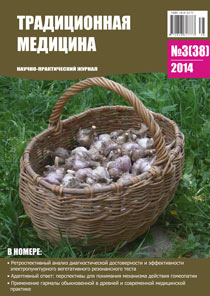The study of phenolic composition and antioxidant activity of adaptogenic remedy «Adaptophyte» in vitro and in vivo
Keywords:
adaptogenic remedy, phenolic compounds, antioxidant activity in vitro and in vivoAbstract
The content of biologically active compounds and the antioxidant activity in vitro and in vivo in a 15-component adaptogenic herbal remedy “Adaptophyte” were studied. The ethyl acetate fraction, decoction and dry extract of “Adaptophyte” were used for in vitro study. The content of following phenolic substances in the dry extract of “Adaptophyte” was established by the HPLC method: gallic (31,7 %), chlorogenic (21,8 %), izoferuloic (8 %), chiсoric (7,4 %) acids, vitexin (3,3 %) and rutin (2,6 %). The in vitro experimental data showed that the most effective Fe 2 + - chelating activity possessed the dry extract, the strong superoxide radical scavenging activity possessed the ethyl acetate fraction and dry extract, and the - NO scavenging activity - ethyl acetate fraction. In addition the ethyl acetate fraction suppressed the formation of malone dialdehyde more effectively than the dry extract or decoction in the lipoprotein model. It has been shown that “Adaptophyte” inhibited the intensive formation of free radical oxidation products and activated the endogenic antioxidant system in rats of the strain Wistar under intensive physical exercises.References
1. Critical reviews of oxidative stress and aging. Advances in Basic Science, Diagnostics and Intervention // Ed. R.G. Cutler, H. Rodriquez. -New Jersey, London, Singapore, Hong Kong: World scientific. - 2003. - V. I. - 822 p.<BR>2. Houghton P.J., Howes M.-J., Lee C.C. et al. Uses and abuses of in vitro tests in ethnopharmacology: visualizing an elephant // Journal of Ethnopharmacology. - 2007. - V. 110. - P. 391-400.<BR>3. Лубсандоржиева П.Б., Болданова Н.Б., Попов Д.В. Количественный анализ флавоноидов в растительном средстве методом высокоэффективной жидкостной хроматографии // Сибирский медицинский журнал. - 2013. - № 1. - С. 114-115.<BR>4. Евдокимова О.В., Самылина И.А., Нестерова О.В. Определение содержания суммы фосфолипидов и каротиноидов в плодах некоторых видов боярышника // Фармация. - 1992. - № 6. - С. 70 - 72.<BR>5. Муравьев И.А., Шатило В.В., Семенченко В.Ф. Спектрофотометрический метод количественного определения урсоловой кислоты // Химия природных соединений. - 1972. - № 6. - С. 738-740.<BR>6. Govindarajan R., Rastogi S., Vijayakumar M. Studies on the antioxidant activities of Desmodium gagenticum // Biol. Pharm. Bull. - 2003. - V. 26. - P. 1424-1427.<BR>7. Оленников Д.Н., Зилфикаров И.Н., Торопова А.А. и др. Химический состав сока каллизии душистой (Сallisia fragrans Wood.) и его антиоксидантная активность (in vitro) // Химия растительного сырья. - 2008. - № 4. - С. 95-100.<BR>8. Chen A.-S., Taguchi T., Sakai K. et al. Antioxidant activities of chitobiose and chititriose // Biol. Pharm. Bull. - 2003. - 2003. -V. 26. - P. 1326-1330.<BR>9. Клебанов Г.И., Бабенкова И.В., Теселкина Ю.О. и др. Оценка антиокислительной активности плазмы крови с применением желточных липопротеидов // Лабораторное дело. - 1988. - № 5. - С. 59-62.<BR>10. Королюк М.А., Иванова Л.И., Майорова И.Г. и др. Метод определения активности каталазы // Лаб. дело. - 1988. - № 1. - С. 16-19.<BR>11. Anderson R.L., Linas S.L., Berns A.S. et al. Nonoleguric acute renal failure / // N. Engl. J. Med. - 1977. - V. 236. - P. 1134.<BR>12. Темирбулатов Р.А., Селезнев Е.И. Метод повышения интенсивности свободнорадикального окисления липидсодержащих компонентов крови и его диагностическое значение // Лаб. дело. - 1981. - № 4. - С. 209-211.<BR>
Downloads
Published
2014-09-30
How to Cite
Лубсандоржиева, П. Б., М. В. Балдандоржиева, Л. Н. Шантанова, and Л. В. Осадчук. “The Study of Phenolic Composition and Antioxidant Activity of Adaptogenic Remedy «Adaptophyte» in Vitro and in Vivo”. Traditional Medicine, no. 3(38) 2014, Sept. 2014, pp. 36-40, http://www.tradmed.ru/index.php/tm/article/view/412.
Issue
Section
Naturopathy
License
Reproduction of any materials without the written permission of the publisher is prohibited.
The responsibility for the accuracy of the information contained in articles and advertisements are the authors and advertisers.


